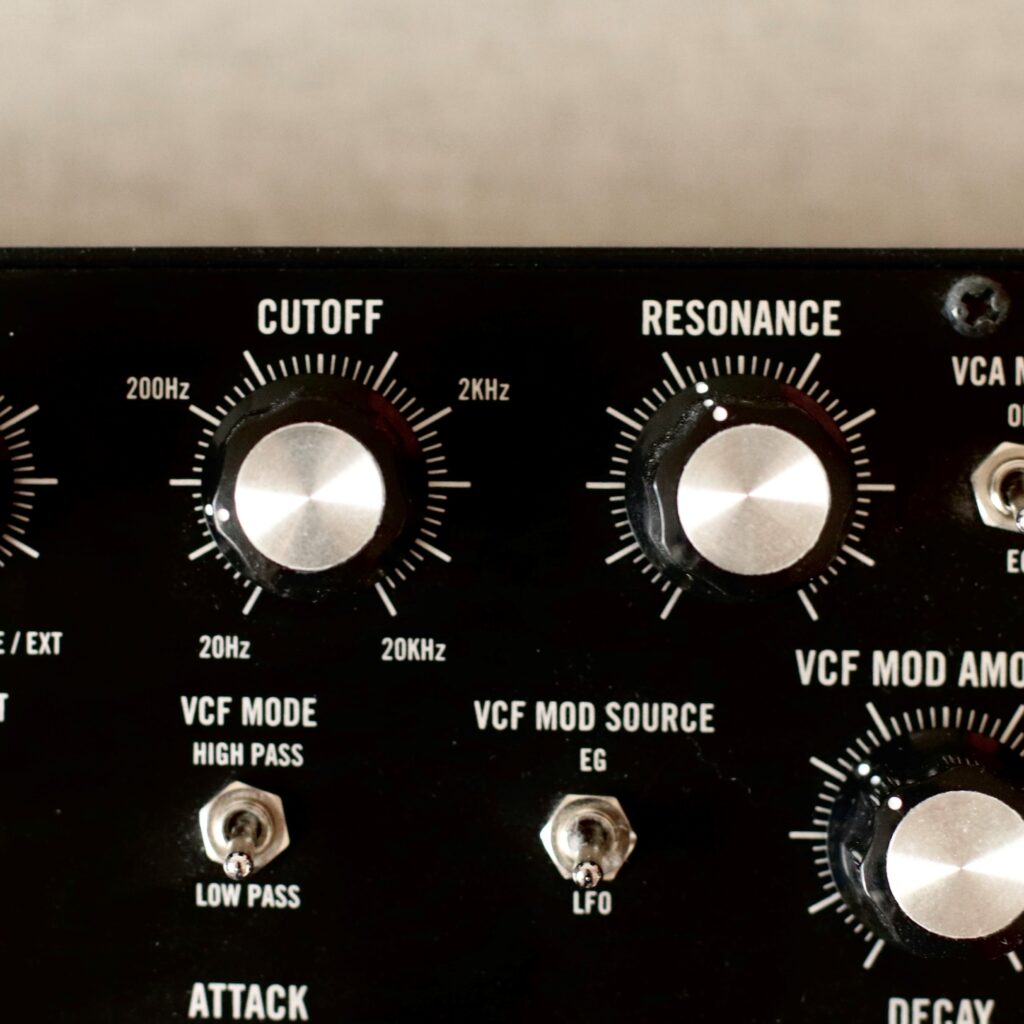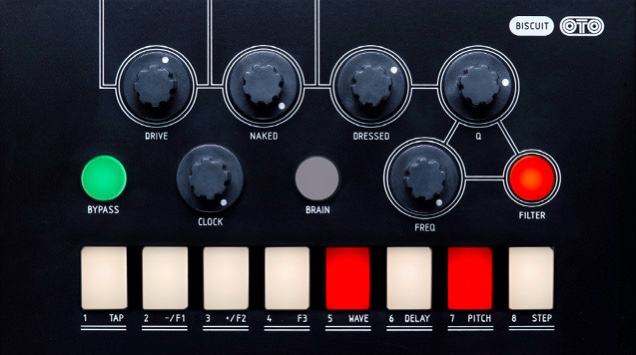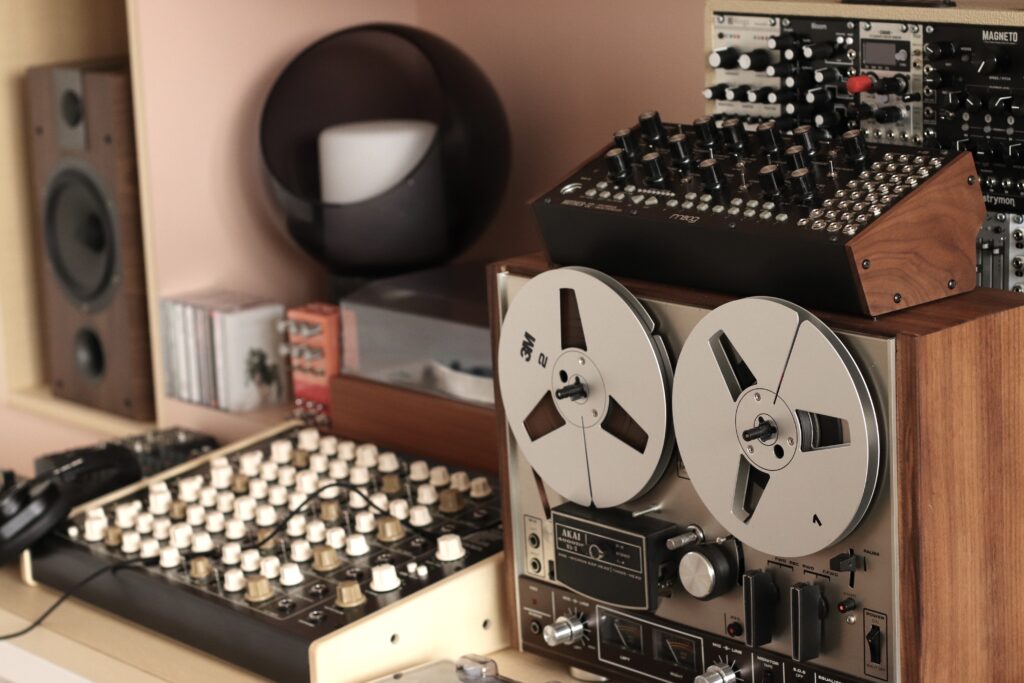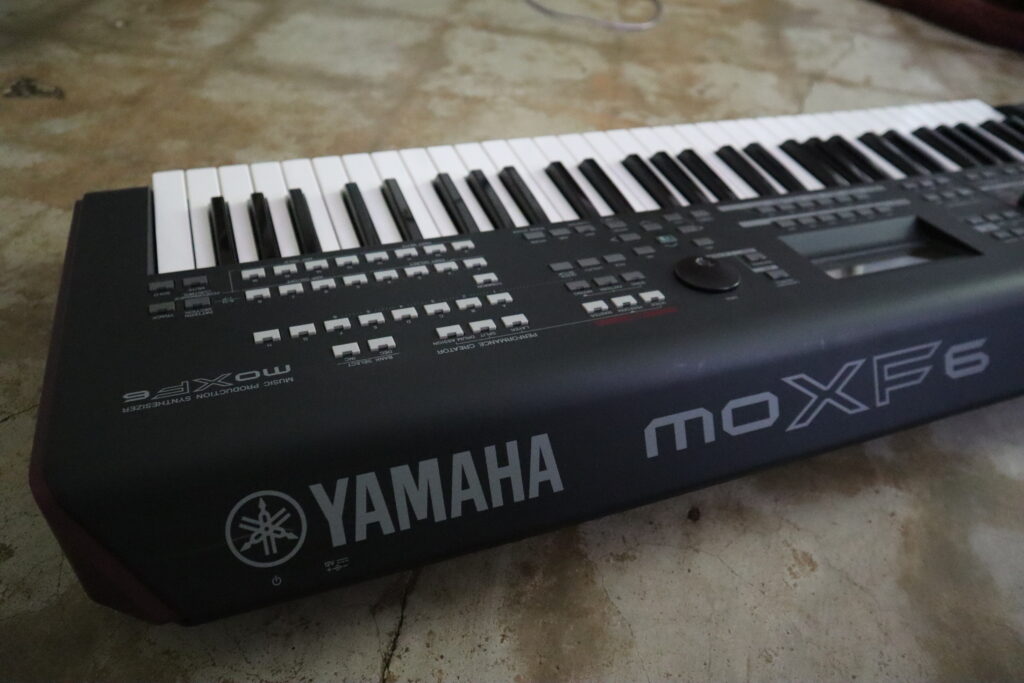1. Favourite knob/fader/switch on a piece of gear and why?

The speed selector on my Uher. The older model has a tiny gear shift for selecting the speed, but the new one just has a knob; a knob with a nice feel and weight. When you move it, you can feel the shifting of the gears inside as the mechanisms thunk into place. It’s immensely satisfying.


My second place choice is the hi-hat decay knob on my 808 clone. Riding that during a groove is endless fun.

2. Do you have an ‘almost’ perfect bit of kit? What would you change?
It might be the SE-02. The first synth I really learned how to use was the SH-09. It taught me how flexible a simple architecture can be, and how rewarding learning how each piece of a synth works together is. It taught me that the controls are as much a part of the instrument as the keys. Ever since then, no synth has been as fun to play as a solid monosynth.

The SE-02’s very much in the same vein, and it seems to be able to scratch every sonic itch I have. The delay’s grainy in all the right ways. The filter has a character that doesn’t make me think “Moog” for some reason. The filter has grit, filth, and somehow feels cold. Not machine cold, but unfeeling in the same that the universe is. When that filter sweeps just right it feels like the dawn, it feels like the slow and sudden heat as the sun rises in the morning. I love this thing. There’s magic in the way the envelopes and filter interact with the delay.
There are three things I’d change. The first thing I’d change is the knob taper. It’s exponential and it makes playing the knobs an extremely delicate procedure. The second is I really wish I had full ADSRs. That extra level of control would be much more welcome than panel controls for portamento. The third is the sequencer. It would be a lot nice if I could have longer sequences, and I really wish the sequence transpose could latch.
3. What setup do you bring on holiday/tour/commute etc.?
The obvious answer here is the OP-Z. It’s fun, quick, and easy to use. It’s also super easy to take on a plane. Making a full track with just this is surprisingly easy and fun. It definitely caught me off guard with how user friendly and fun it is to use.

Realistically and historically, though, my preference is to bring either the Volca FM and Mini KP or the Roland SE-02. When I sit down to play I’m not typically trying to write or work on a song. Usually I just want to explore a sound or a musical phrase. The SE-02 and Volca FM are excellent for sound exploration. If I want to make a minimalist composition these are my go-to pieces of gear, and fortunately they’re small enough for a carry-on.

4. What software do you wish was hardware and vice versa?
I am (un)fortunately a luddite. When I record or make music it’s almost entirely analog. One thing I wish I could do with my hardware setup is automate parameter controls. There are ways to do this if I went modular. If I used software I know I could automate some of the parameters of my physical instruments. Bringing Windows, Mac, or Linux into my setup would violate a lot of what my setup’s built on: spontaneity. I can write and record a song relatively quickly and easily, without worrying about system updates or getting sucked down the black hole that is the internet.

This is typically just called a DAWless setup. But I really don’t like that nomenclature. It defines a musical approach as being the absence of something, in a way. Really I just like playing instruments and don’t want to try and play a computer like an instrument.
5. Is there anything you regret selling… or regret buying?

The Prophet 6 is a rare animal. I’ve bought a lot of gear that I regretted, but this one the only one I’m keeping. It sounds great and it’s super flexible, but it has a lot of little design choices that drive me nuts. The problem is it sounds sooooo good. So, when I use it I love the sounds I get, but I always find myself frustrated by something.
It seems like it’s made for people working in studios who want to lay down tracks, or sample its lush sounds to use in a DAW. Regardless, it doesn’t seem to be made for my workflow.

But I am going to keep it around because it sounds ridiculously nice. The sound is so rich and deep I forget how annoying it was to program it. It’s like hiking up a mountain with uncomfortable shoes. It’s a real pain at times, but the views you get make the discomfort worth it.
6. What gear has inspired you to produce the most music?
The Volca FM is definitely my most inspiring. It’s endlessly versatile, and has more features under its hood than it has any right to for its size and price point. It has the wild and wiry sounds FM is known for, and the limited controls on the surface are deceptive in their simplicity. It’s easy to rely on presets, and tweaking the few controls on the surface gets you tons of control. It also plays nicely with any effect you want to pair it with.

It’s an instrument I have a love-hate relationship with, though. I’ve owned three of them. Whenever I try to dive into the parameters to do some deep editing, it make me want to toss it out the window. The balance of features, and how easy it is to switch between playing modes to introduce variations makes it really fun to play.
7. If you had to start over, what would you get first?
The Jazzmaster. Even though any synthesizer can run sonic circles around any guitar/pedal combo, it feels more emotional to play than any synth or drum machine. Fiddling around with the different intervals on the neck taught me everything I know about music, too. It’s cliche as hell, but playing a guitar with some fuzz and delay could keep me happy forever.

8. What’s the most annoying piece of gear you have, that you just can’t live without?
The Zoia is hands down the most useful and inconvenient piece of gear I own. If I have an idea that I can’t achieve with anything else, the Zoia can usually get me close enough. It does what it does better than anything else I know of, but I wouldn’t want to use it with a band.

9. Most surprising tip/trick/technique that you’ve discovered about a bit of kit?
Envelopes are surprisingly underrated. Clones of “good” ones don’t really get talked about, and people don’t really seem to covet and worship the exact curves of one over another’s.
No two synths I’ve played have had the same envelopes. Each one has its own type of pluck, swell, and decay. It feels like they’re what transform a synth into a playable instrument. I wish there was more emphasis on modulating and controlling their parameters. Slight modifications to the decay of an adsr can completely transform a bland sequence. They really breath life into every sound.
Artist or Band name?
Willy
Genre?
I’ve never been good at sticking to a genre. It seems to waffle between synthwave, cinematic, harsh noise, and synth-pop.
Selfie?

Where are you from?
Benson, Utah
How did you get into music?
My mom signed me up to play violin in my middle school’s orchestra. After that it was relatively easy to play bass in my friend’s band. From there I was hooked.
What still drives you to make music?
It’s an emotional thing mainly. It helps me experience my emotions. Lately when I sit down to play it’s after a rough day, and it helps me process what’s happened. Other times, it’s when I’m feeling numb, and playing helps me open up and experience my emotions. This is essentially why I haven’t recorded very much music. It’s usually an expression of anxiety, depression, or fear. So, I don’t really want to live in that moment long enough to record it.
How do you most often start a new track?
Most often it’s with a riff or a phrase. I’ll have an idea for a sound, or find one via knob twiddling, and then I see what notes feel good with that sound. Once I’ve got something that makes me happy, I start seeing what other sounds I can layer in to compliment the original sound.
How do you know when a track is finished?
When I can listen to it without wincing, and it doesn’t feel empty. If I can listen without wincing it means I don’t have anything to redo, and as long as it sounds “full” I don’t need to add anything else.
Show us your current studio

Best creative advice that you’ve ever heard?
Play every day. Some variant of that’s what I hear all the time from everyone, but there really is no better advice. In my twenty years of music making experience, this advice has always held true. If you’re not inspired then try learning theory, practicing your technique, try reproducing real world sounds with synthesizers, try something outside of your comfort zone, or just have fun making noises. Keep at it every day to keep your tools sharp, then you’ll be ready to act when you actually have something to play.
Promote your latest thing… Go ahead, throw us a link.
The only places I regularly post anything are my Instagram and tiktok.



















